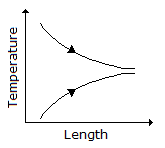Chemical Engineering :: Chemical Engineering Basics
-
The thickness of oxide film is y at time t. If K1, K2 and K3 are the temperature dependent constants, the parabolic law of oxidation is given by
-
Which of the following has the least value of ultimate tensile strength (UTS) ?
-
Which of the following is a commonly used manometric liquid for low pressure range?
-
The highest stress that a material can withstand for a specified length of time without excessive deformation is called the __________ strength.
-
Temperature profile along the length of a gas-gas counter flow heat exchanger is correctly represented by
-
At the point of boundary layer separation in fluid flow, the
-
Brinell Hardness Number (BHN) for talc is approximately in the range of
-
A spring material should have low


 Whatsapp
Whatsapp
 Facebook
Facebook





